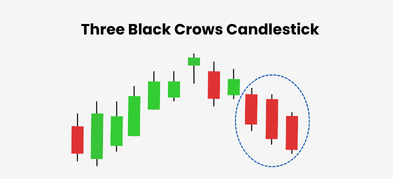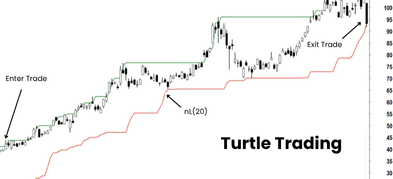Important Information
This website is managed by Ultima Markets’ international entities, and it’s important to emphasise that they are not subject to regulation by the FCA in the UK. Therefore, you must understand that you will not have the FCA’s protection when investing through this website – for example:
- You will not be guaranteed Negative Balance Protection
- You will not be protected by FCA’s leverage restrictions
- You will not have the right to settle disputes via the Financial Ombudsman Service (FOS)
- You will not be protected by Financial Services Compensation Scheme (FSCS)
- Any monies deposited will not be afforded the protection required under the FCA Client Assets Sourcebook. The level of protection for your funds will be determined by the regulations of the relevant local regulator.
Note: Ultima Markets is currently developing a dedicated website for UK clients and expects to onboard UK clients under FCA regulations in 2026.
If you would like to proceed and visit this website, you acknowledge and confirm the following:
- 1.The website is owned by Ultima Markets’ international entities and not by Ultima Markets UK Ltd, which is regulated by the FCA.
- 2.Ultima Markets Limited, or any of the Ultima Markets international entities, are neither based in the UK nor licensed by the FCA.
- 3.You are accessing the website at your own initiative and have not been solicited by Ultima Markets Limited in any way.
- 4.Investing through this website does not grant you the protections provided by the FCA.
- 5.Should you choose to invest through this website or with any of the international Ultima Markets entities, you will be subject to the rules and regulations of the relevant international regulatory authorities, not the FCA.
Ultima Markets wants to make it clear that we are duly licensed and authorised to offer the services and financial derivative products listed on our website. Individuals accessing this website and registering a trading account do so entirely of their own volition and without prior solicitation.
By confirming your decision to proceed with entering the website, you hereby affirm that this decision was solely initiated by you, and no solicitation has been made by any Ultima Markets entity.
I confirm my intention to proceed and enter this websiteJPY, as one of the world’s major safe-haven currencies, constantly influences the nerves of the financial market. In recent years, due to changes in the Bank of Japan’s policies and global economic uncertainties, the JPY trend has once again become the focus of the market.
This article takes you through an analysis of the main driving factors of the JPY in 2025, its possible future paths, and investment strategies, helping you gain an edge in the forex market.
Recent JPY Trend Overview
According to data from Japan’s Ministry of Finance, since the fourth quarter of 2024, the JPY to USD exchange rate has fluctuated significantly, rebounding from 150.25 to 145.30.
Investor expectations for adjustments in Japan’s monetary policy have risen, and market safe-haven demand has also pushed up the JPY trend.
The JPY has acted as a traditional safe-haven currency during geopolitical events, and investors can start trading on the Ultima Markets platform.

Key Forces Driving The Current JPY Trend
Monetary Policy Divergence Between US and Japan
This remains the core driver of JPY trends. Though the Federal Reserve (Fed) may cut rates, the pace and scale are slower than early-year market expectations, with rates still elevated. In contrast, the Bank of Japan (BOJ), despite ending negative rates and YCC policy, maintains cautious dovishness, emphasizing continued accommodative support for the economy. This sustains significant US-Japan yield spreads, persistently weighing on the yen.
Japanese Inflation and Economic Recovery
Japan’s core CPI (excluding fresh food) recently fluctuated around 3% (June 2025 data). The Bank of Japan (BOJ) closely monitors whether the “wage-inflation” virtuous cycle solidifies.
Should inflation persistently meet targets and the economy demonstrate stronger resilience, market expectations for further BOJ tightening will rise, potentially supporting JPY trends.
Global Safe-Haven Sentiment
The JPY’s traditional safe-haven attributes persist. When geopolitical risks intensify (e.g., escalating regional conflicts), financial markets experience severe turbulence, or recession fears mount, capital tends to flow into JPY for safety, boosting its exchange rate. This pattern was repeatedly validated during the second half of 2024.
Potential Intervention by Japanese Authorities
When JPY experiences excessive, disorderly unilateral depreciation severely threatening domestic economic stability (e.g., raising import costs or exacerbating inflation), Japan’s Ministry of Finance (MOF) may collaborate with the central bank to intervene by selling USD and buying JPY.
For instance, interventions in September/October 2022 and April/May 2024 significantly boosted JPY short-term.
International Energy and Commodity Prices
As a major resource importer, Japan suffers deteriorated terms of trade and widening trade deficits when oil/commercial prices surge theoretically bearish for JPY. However, this factor is often overshadowed by safe-haven sentiment or policy expectations.

Historical Data Review: JPY’s Cyclical Fluctuations
| Year | High (USD/JPY) | Low (USD/JPY) |
| 2022 | 151.94 | 115.20 |
| 2023 | 148.35 | 133.10 |
| 2024 | 152.88 | 140.95 |
Seven Key JPY Trends In 2025
Interest Rate Differential Weakening But Not Disappearing
The Fed’s rate cut path is expected to moderate (an estimated 2 cuts in 2025), while the BOJ may slightly raise rates by 0.1%-0.2%. The suppressing effect of the interest rate differential on the JPY trend is marginally weakening.
BOJ Policy Shift Pace Setting
The July meeting minutes show that the BOJ still has concerns about the persistence of inflation. Any hints of reducing bond purchases or raising rates will trigger a technical rebound of 3%-5% in the JPY trend.
Intervention Threat Building Exchange Rate Floor
The 152 level has become the “policy bottom line” for the JPY trend. A rapid depreciation reaching the 150+ range will trigger verbal warnings, and breaking 151.5 will face actual intervention risks.
Geopolitical Risks As The Biggest Variable
Escalation in the Taiwan Strait, the Middle East, or the Ukraine situation could trigger an influx of safe-haven funds, pushing the JPY up 2%-4% within 24 hours, reversing the JPY trend.
Technical Bull-Bear Watershed Established
- Key Support: USD/JPY 138.50 (200-week moving average + Fibonacci 61.8%)
- Strong Resistance: USD/JPY 150.00-152.00 (intervention red zone)
Carry Trade Unwinding Potential
If BOJ tightens faster or safe-haven demand rises, the USD 2.3 trillion positions borrowing JPY to buy high-yield assets (such as AUD and US stocks) face unwinding, which will sharply push up the JPY trend.
Gradual Appreciation Channel Forming
With expectations of narrowing interest rate differentials, BOJ normalization, and intervention support, the JPY trend is expected to start a 5%-8% volatile appreciation in the second half of 2025 (USD/JPY target 135-140)

Impact Of JPY Trend On Other Assets
- On Gold: JPY appreciation increases gold demand
- On US Stocks: Safe-haven capital flows back to JPY, affecting tech stock performance
- On Import and Export Companies: Export companies are pressured, import companies benefit
Frequently Asked Questions FAQ
Q: What should I do if I am trapped after buying JPY now?
A: If your cost is in the 148-150 range, it is recommended to hold and reduce positions near 152; if bought below 140, you can continue to hold and wait for a rebound triggered by BOJ tightening. For beginners, it is recommended to practice with a demo account.
Q: How long can Japan’s FX intervention last?
A: A single intervention effect lasts about 2-4 weeks and needs to be combined with a policy shift to reverse the trend. After the May 2024 intervention, JPY rebounded 6% but depreciated again under interest rate differential pressure.
Q: What are less-known indicators affecting the JPY trend?
A: Pay attention to the foreign bond purchase trends of Japanese life insurance companies (released on the 5th of each month). Increasing foreign bond holdings is negative for JPY, while reducing them supports the JPY trend.

Conclusion
The JPY trend in 2025 will fluctuate within the three dimensions of “interest rate differential pressure,” “policy turning points,” and “safe-haven impulses.” The key to investment success lies in:
- Policy Sensitivity: Closely monitor BOJ/Fed policy language shifts, especially as the September BOJ meeting may release tightening signals.
- Intervention Defense Line: 150-152 is the official bottom line for the JPY trend; approaching this zone requires initiating defensive operations.
- Safe-Haven Triggers: When the VIX breaks 25 or the US Treasury yield curve inversion deepens beyond 0.5%, immediately increase JPY safe-haven positions.
The JPY trend has entered a critical turning window. Through event-driven trading, strict risk boundaries, and allocation of JPY hedge positions, investors can turn volatility into excess returns.
Disclaimer: This content is provided for informational purposes only and does not constitute, and should not be construed as, financial, investment, or other professional advice. No statement or opinion contained here in should be considered a recommendation by Ultima Markets or the author regarding any specific investment product, strategy, or transaction. Readers are advised not to rely solely on this material when making investment decisions and should seek independent advice where appropriate.












